Bluebonnets, buckeyes, and more in bloom at Wildflower Center gardens
Ahh, Texas bluebonnets! They’re turning Austin’s roadsides blue right now, and early ‘bonnets were in bloom last week at the Lady Bird Johnson Wildflower Center.
I wish everyone could experience a good bluebonnet season at least once in their lives.
California poppies were blooming too, their orange cups a counterpoint to the sapphire bluebonnets.
Feathery foliage
That same clump of orange California poppies is at middle-left in this wide shot of the central garden. As you can see, the wildflowers were pretty sparse then (March 13th), but each week more and more early-spring wildflowers like bluebonnets and poppies appear until peak bloom in early to mid-April.
The Wildflower Center’s stock-tank game is strong.
Fragrant Carolina jessamine (Gelsemium sempervirens) blooming on the long cedar pergola that once supported a grapevine and a native wisteria. Maybe they’re still there.
In the butterfly house, a pair of cecropia silkmoths were mating acrobatically.
Nearby, the pollinator garden was coming to life with flowering ornamental trees like Mexican buckeye (Ungnadia speciosa).
Their carnation-pink flowers were pretty in the afternoon light.
More
And more!
Texas mountain laurel (Sophora secundiflora) was putting on a show too. Here, trees flowering in different shades of purple stand side-by-side for comparison.
Which do you prefer: the pale lilac or amethyst purple?
They both smell like grape Kool-Aid.
Mmmmm!
Mexican plum (Prunus mexicana) has a spicy fragrance that tickles my nose.
Hints of last season remain for now, like a stand of bushy bluestem (Andropogon glomeratus).
Heading into the woodland trail that leads to the family garden, I spotted a sweet wren camouflaged amid the bare branches of a cedar elm.
This majestic tree stood bare, not yet convinced winter was over. I bet it’s green now, a week and a half later.
Under a mass of wheeler sotol (Dasylirion wheeleri), a patch of bluebonnets intensifies the blues.
The family garden is usually swarming with kids, but during the late Tuesday hours (until 8 pm now!), I had the place nearly to myself.
Lots of texture here, with a tiled Fibonacci spiral wall and a stone tunnel beyond.
Last season’s freeze-dried fruits hang on a buttonbush (Cephalanthus occidentalis).
We’ll peek inside the tunnel in a moment.
But first let’s check out the giant twig nests for kids to play in.
Another play structure was walled with bound grasses.
Rusty blackhaw viburnum (Viburnum rufidulum) in bloom. I need to plant one.
A closeup
I’ve always liked this contemporary planting of Arizona cypress, wheeler sotol, and muhly grass (probably Gulf muhly).
A wide look at the Fibonacci spiral wall.
Inside the stone tunnel, Keith Haring-like cave “paintings” adorn the walls.
A small cave leads behind a waterfall and is topped with a green roof of spiky desert plants.
Water abundance and the lack of it, in one vignette.
Yucca in bloom
A stream meanders toward the waterfall cave from holey limestone boulders — symbolic headwaters. A nearby water pump and pails entice kids to pour water over the rocks or into the stream. Beyond, a galvanized cistern collects water from the roof of a shade pavilion.
Dinosaurs were here!
Behind the waterfall, a flowering Texas mountain laurel caught my eye, and then so did the sunlit spiral tower behind it.
A vertical view captures a towering yucca and agave as well.
As the sun dipped to the horizon, its last rays illuminated a climbing Carolina jessamine.
Golden trumpets, each one heavenly scented
The golden flowers stand out against the dark-green leaves.
Arched doorway view
Rabbit-eared leaves of giant coneflower carpet a rain garden. Beyond, butterfly benches beckon visitors of all sizes.
A hedge maze leads to a central sculpture: a glassy-eyed frog. I adore the fragrant “hedge” of Carolina jessamine trained on a sandwich of wire trellising. That “sandwich” provides protection for the vine, plus hedge-like architecture for the central maze.
Mexican plums flowering by the pavilion caught my eye, still glowing at twilight.
Popcorn-like blossoms attracted bees…
…and framed blue-green wheeler sotols.
I’m so glad to have caught them in full bloom.
I was fast running out of daylight, and the gardens would be closing soon.
It was time to hop on home.
This is part 2 of my early spring visit to the Wildflower Center on March 13th. For part 1 of my Wildflower Center tour, click here.
I welcome your comments; please scroll to the end of this post to leave one. If you’re reading this in a subscription email, click here to visit Digging and find the comment box at the end of each post.
_______________________
Digging Deeper: News and Upcoming Events
Join the mailing list for Garden Spark Talks! Inspired by the idea of house concerts, I’m hosting a series of garden talks by inspiring designers and authors out of my home. Talks are limited-attendance events and generally sell out within just a few days, so join the Garden Spark email list for early notifications. Simply click this link and ask to be added.
All material © 2006-2018 by Pam Penick for Digging. Unauthorized reproduction prohibited.


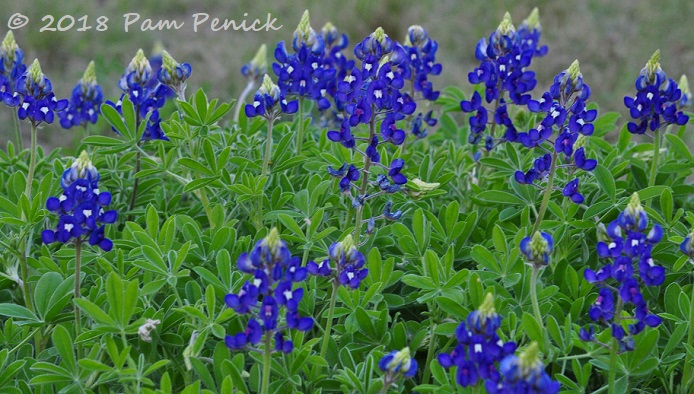
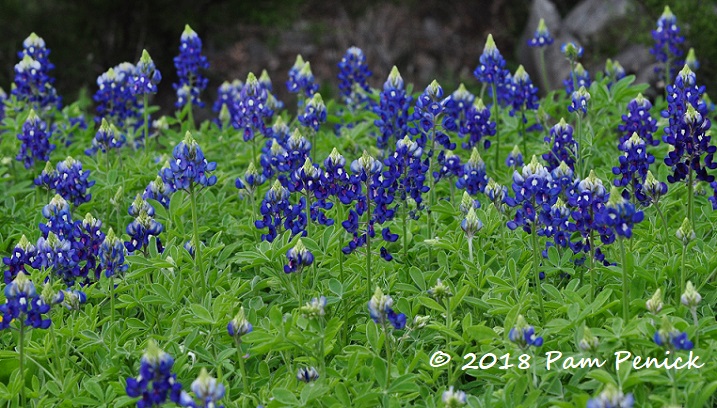
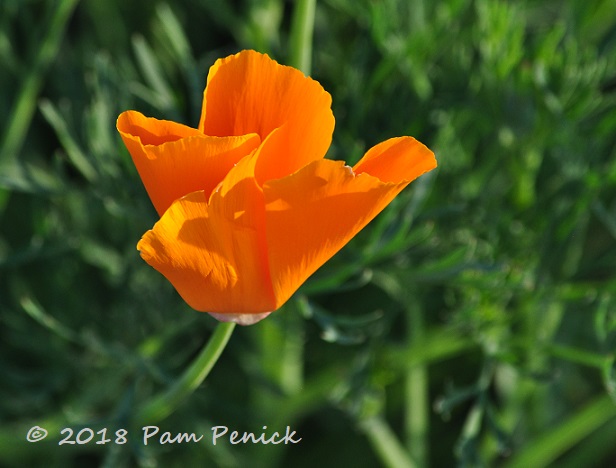
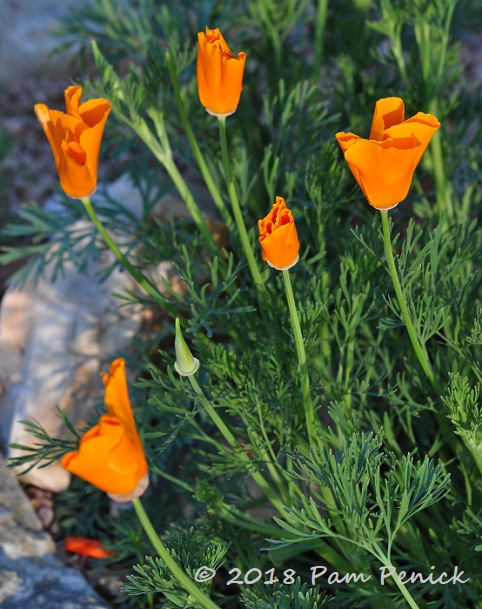
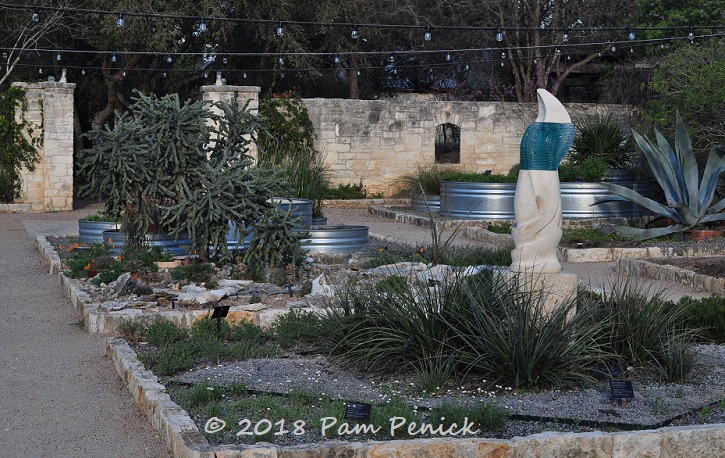
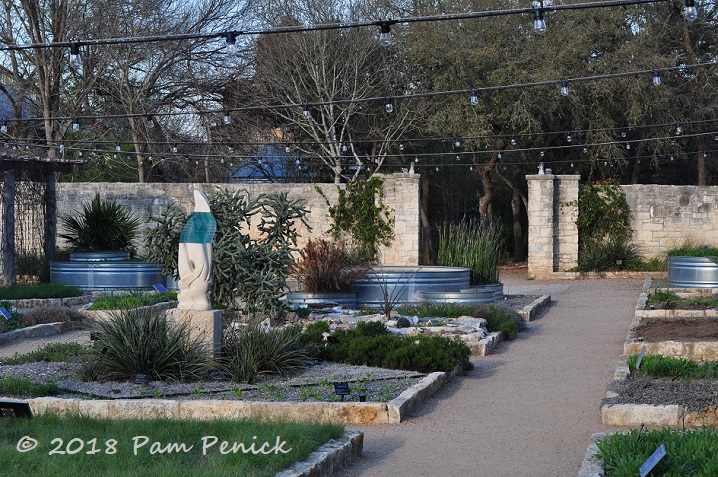
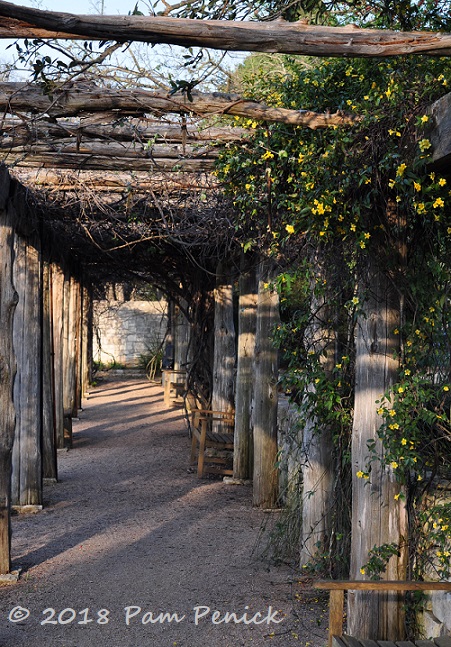
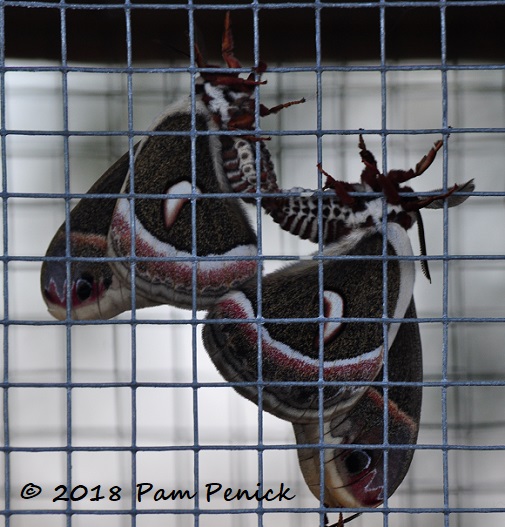
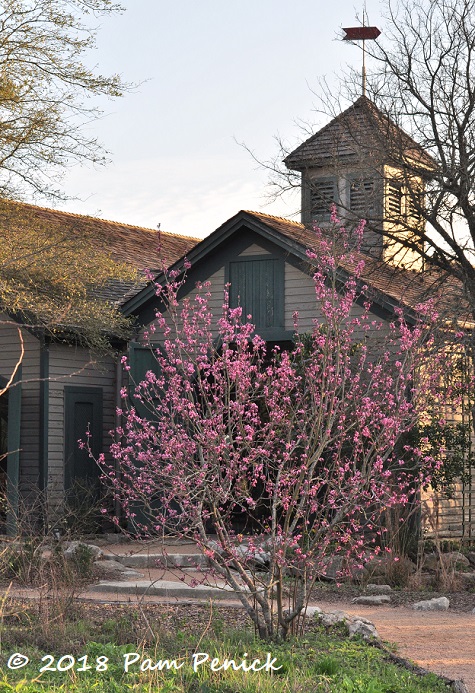
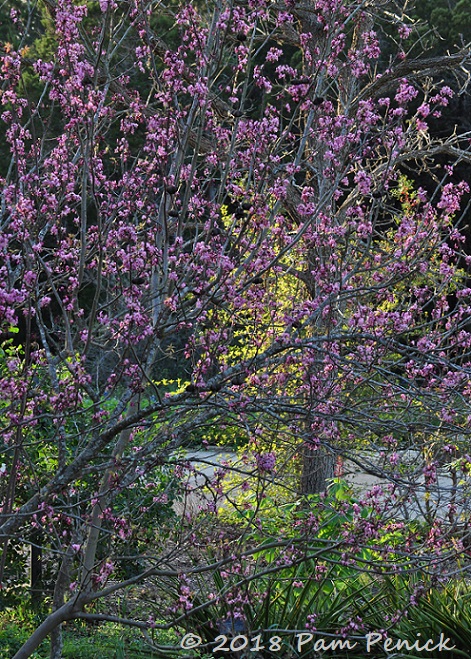
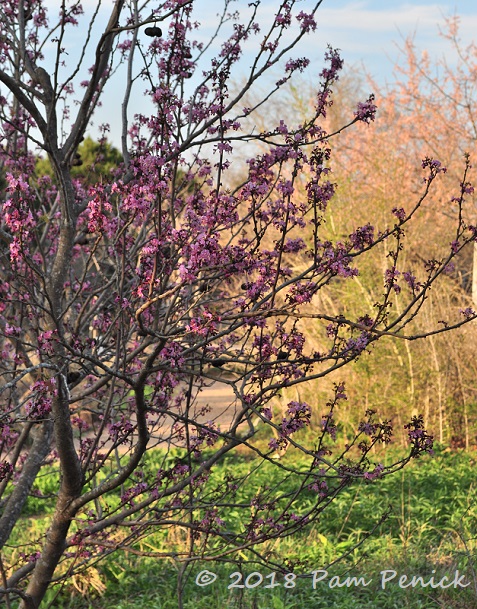
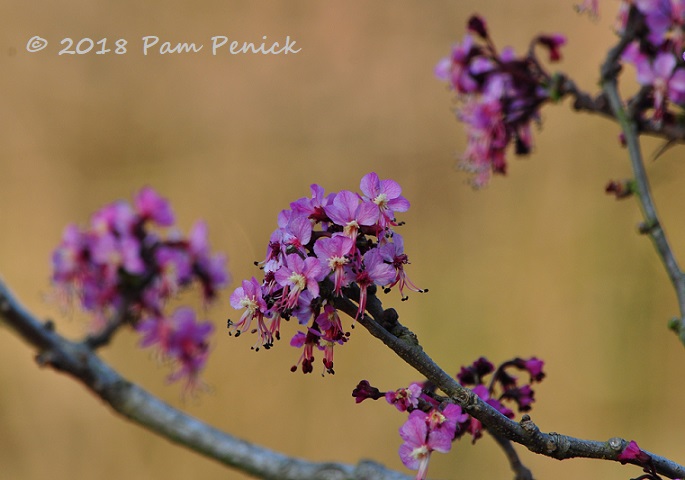
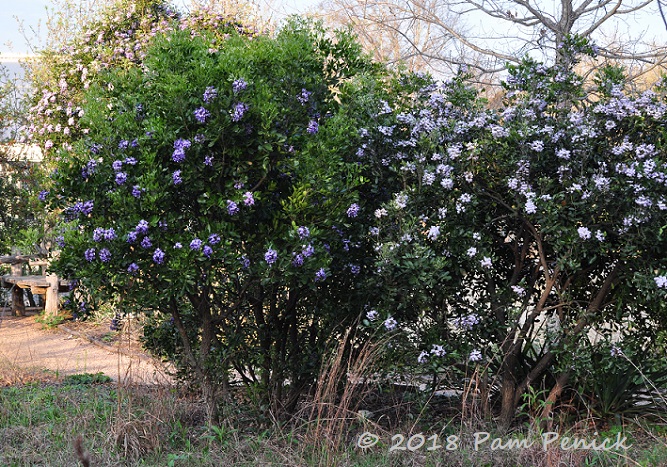
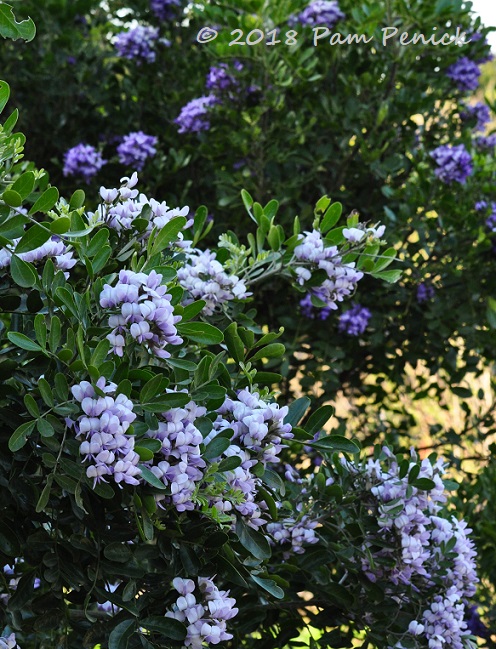
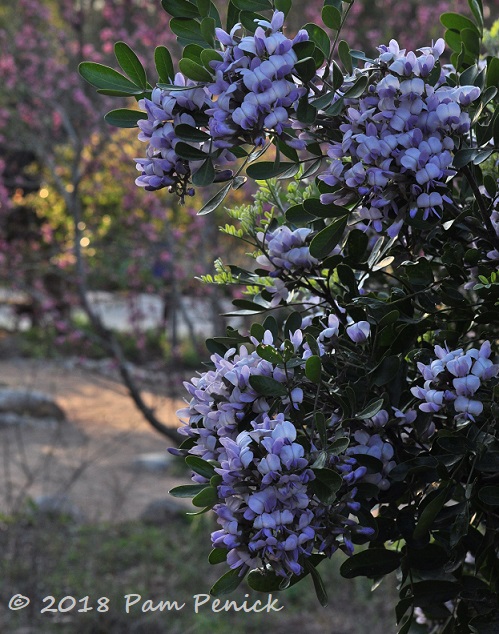
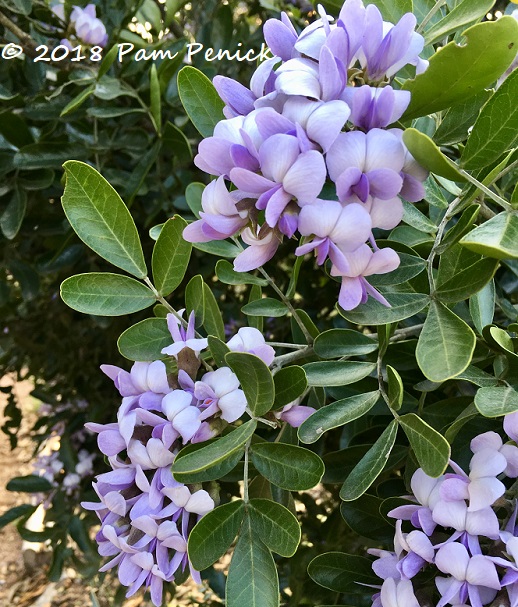
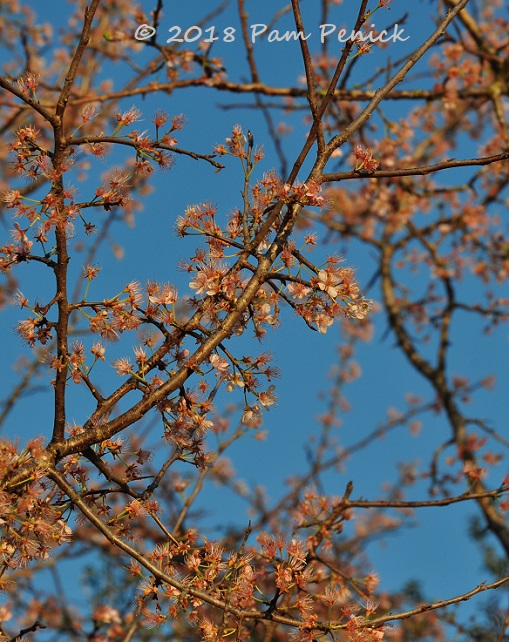
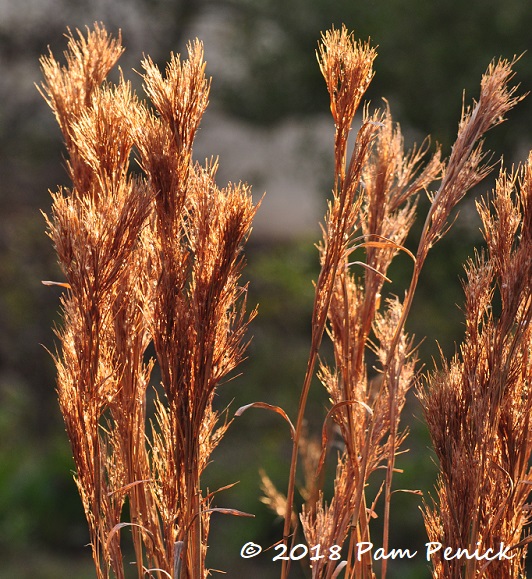
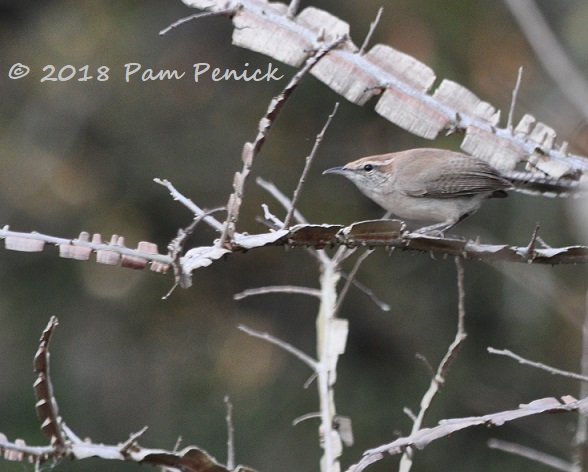
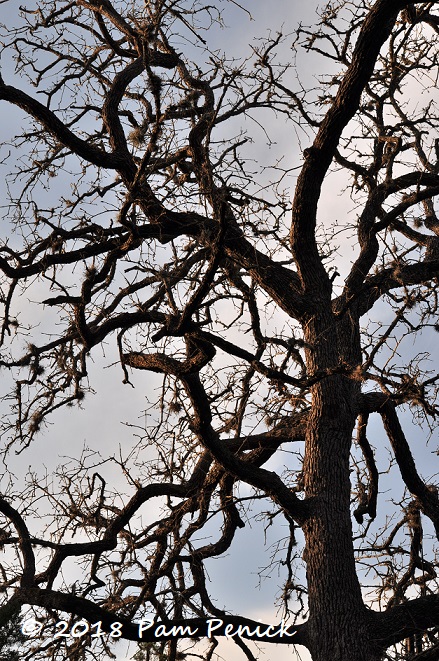
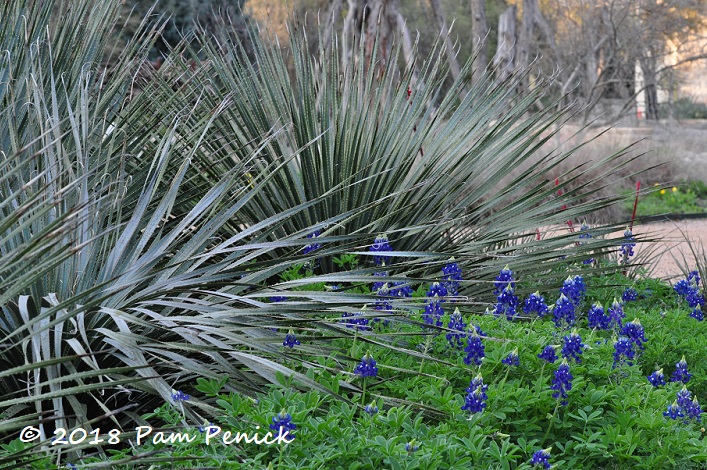
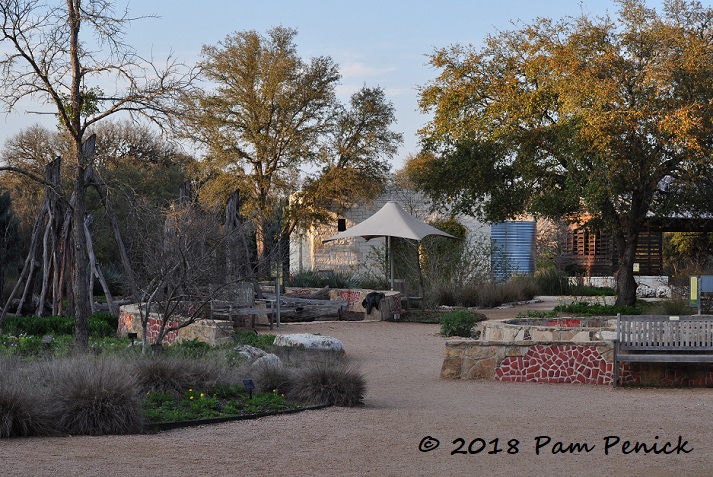
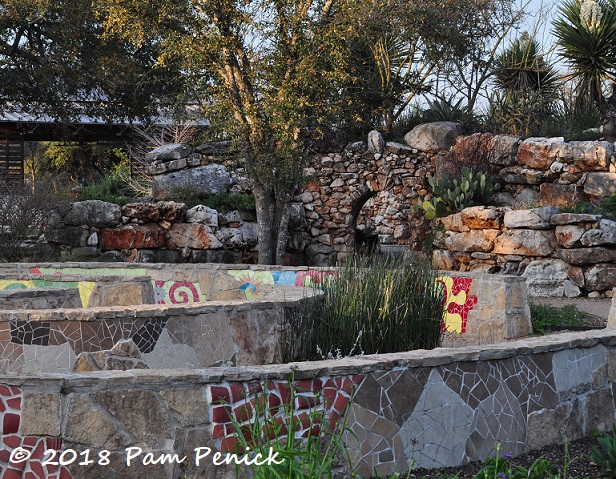
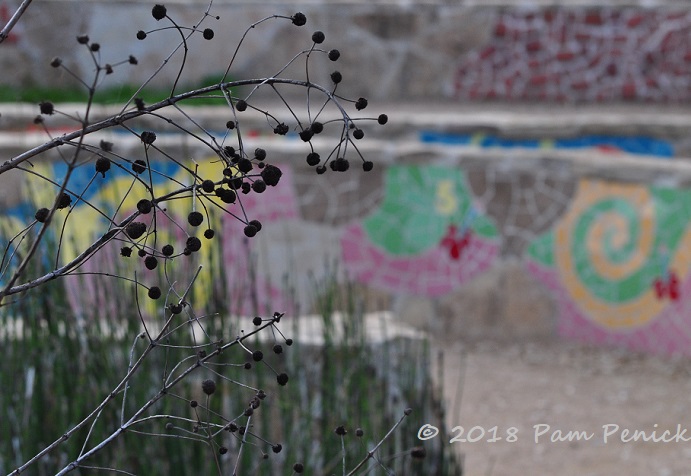
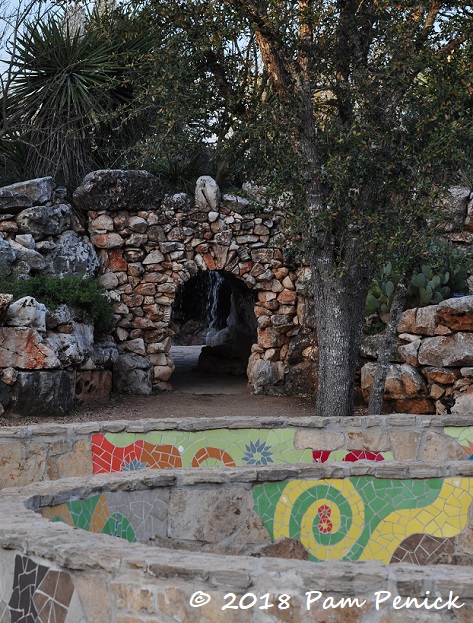
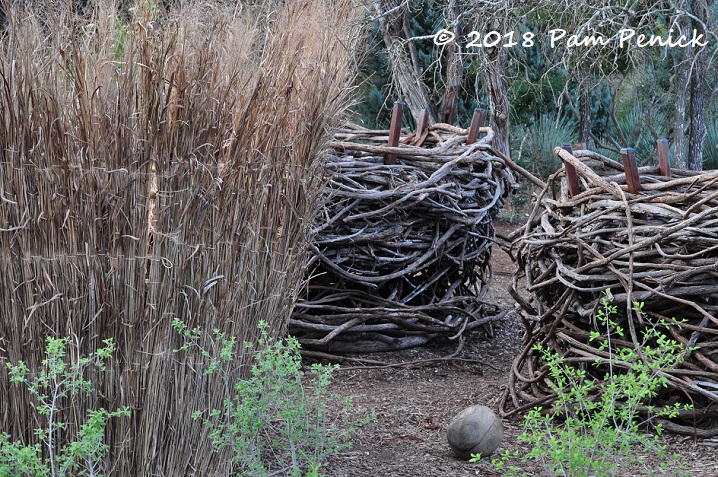
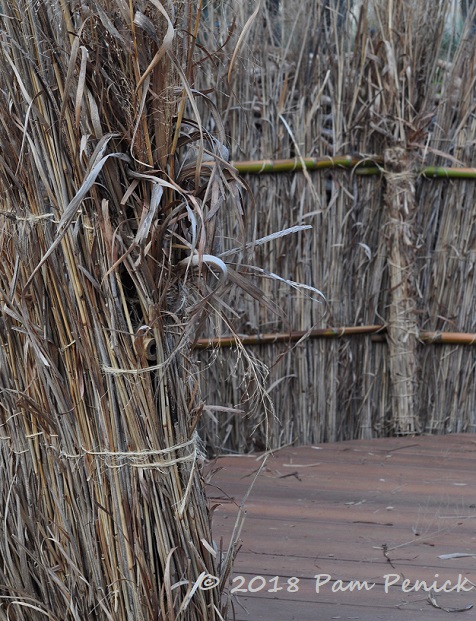
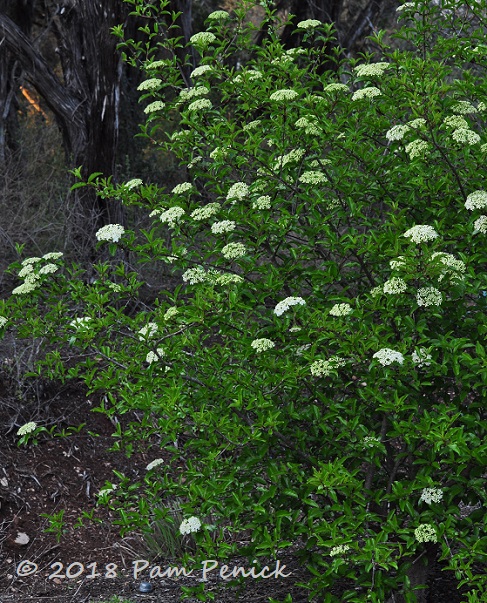
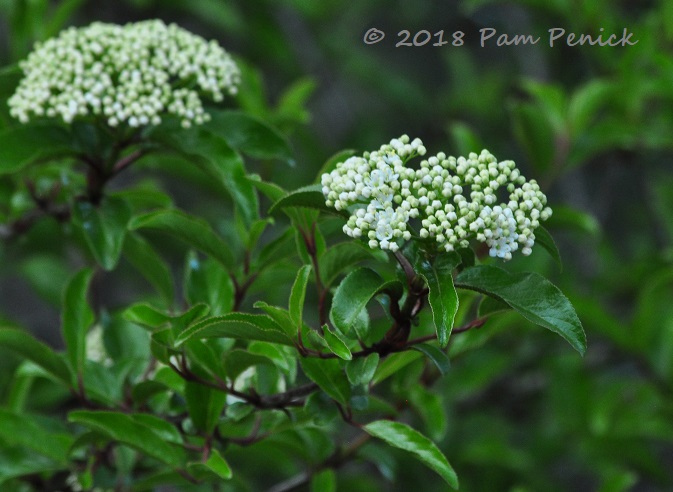
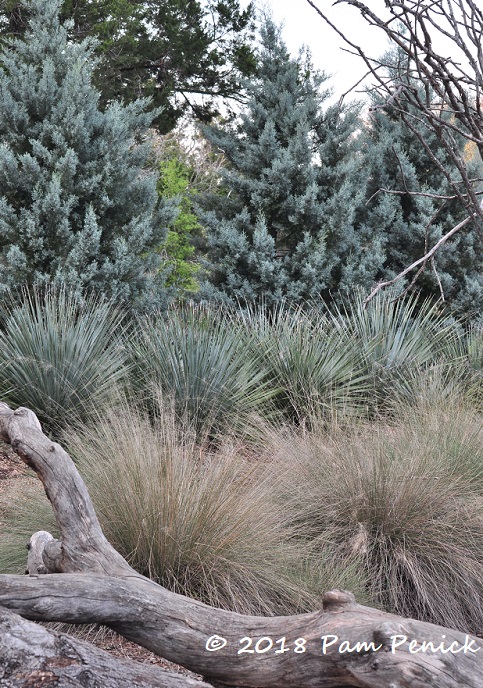
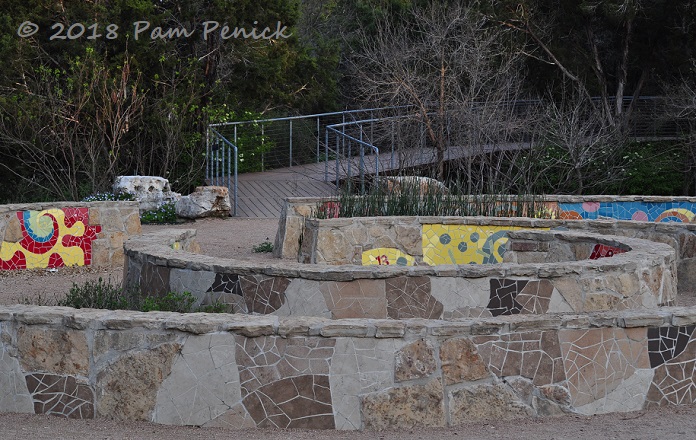
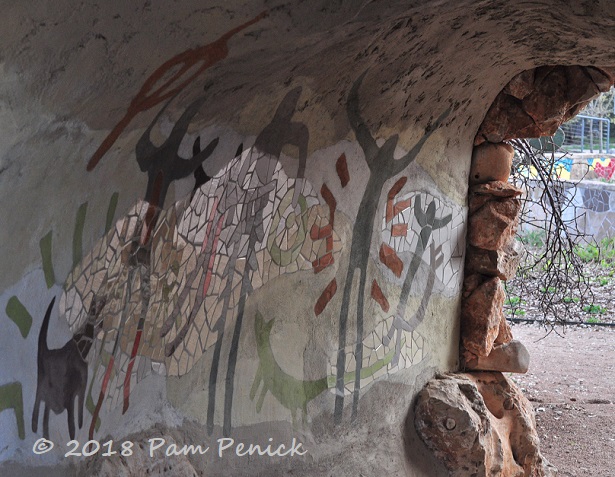
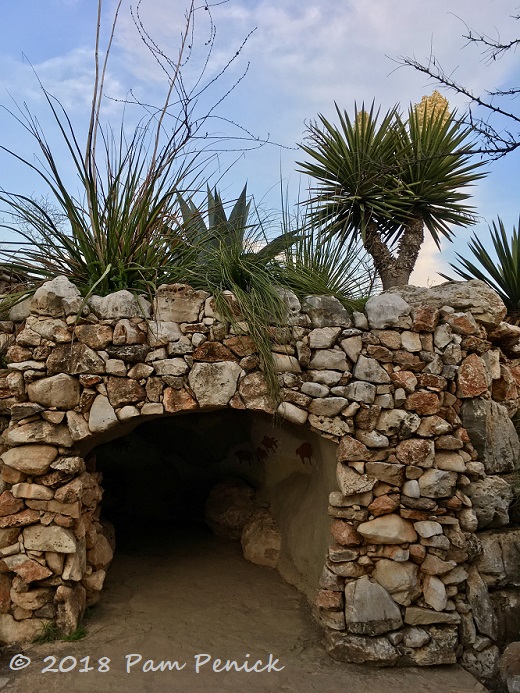
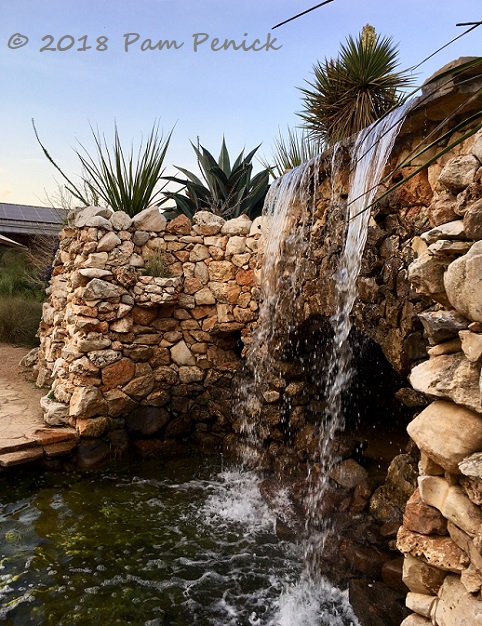
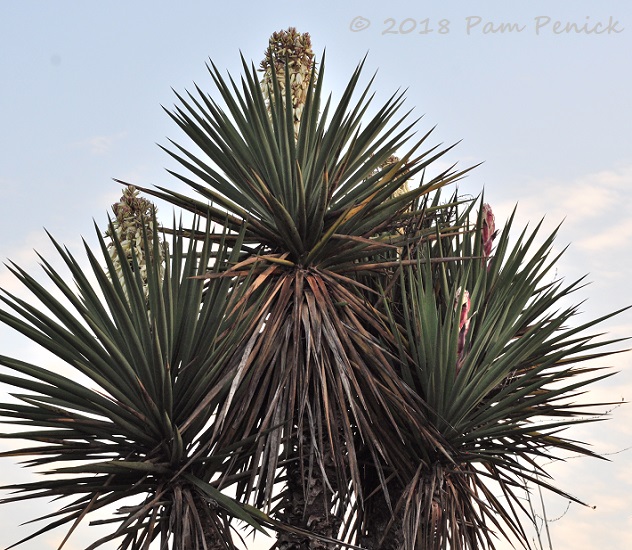
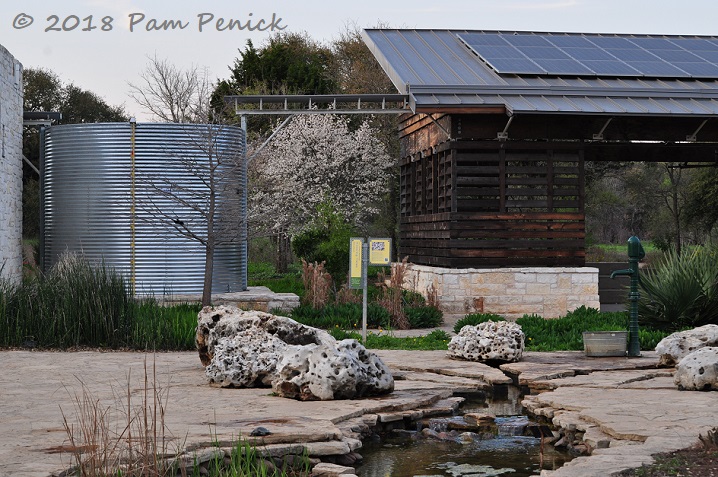
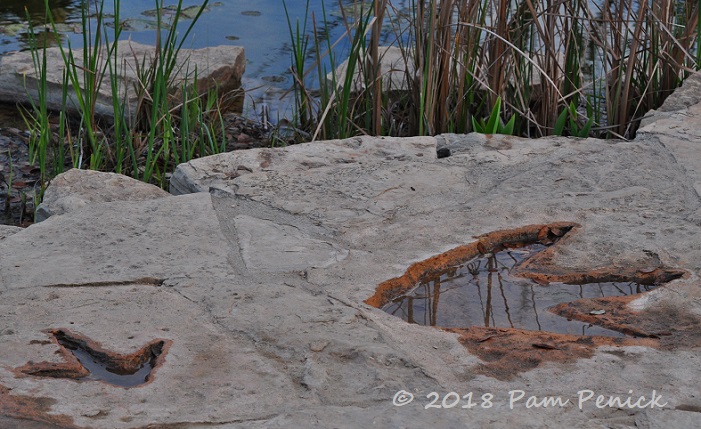
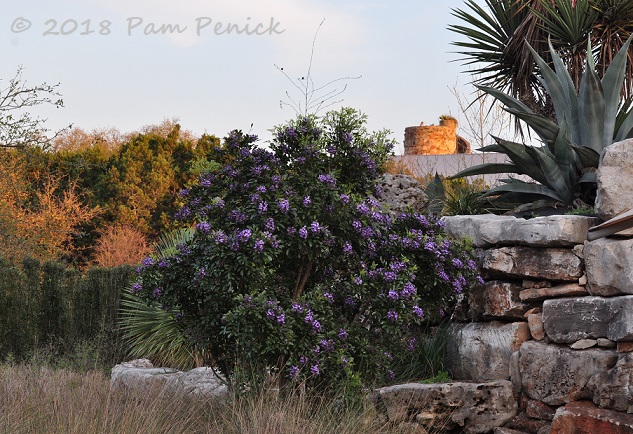
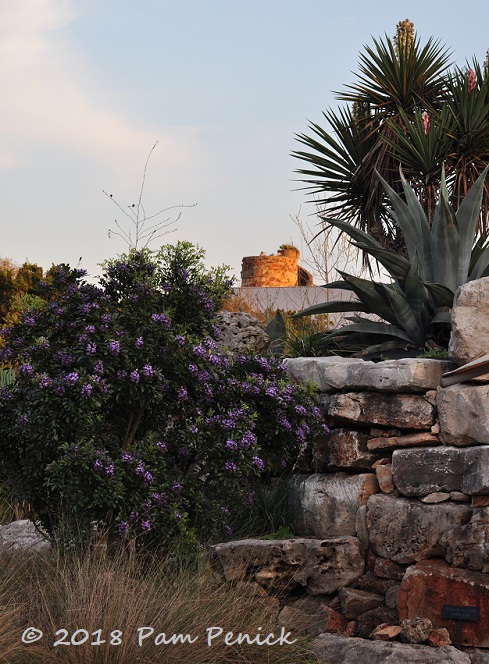
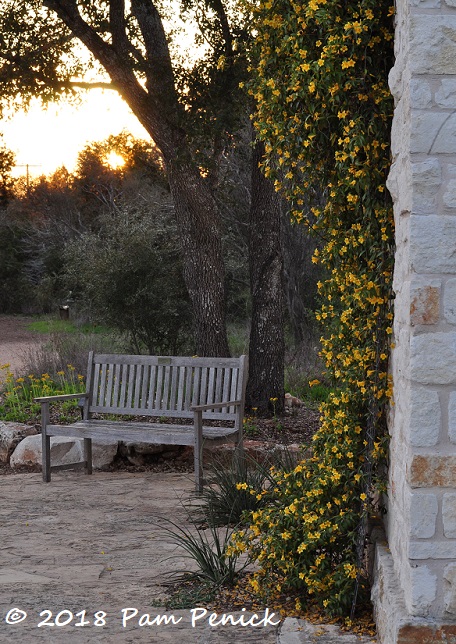
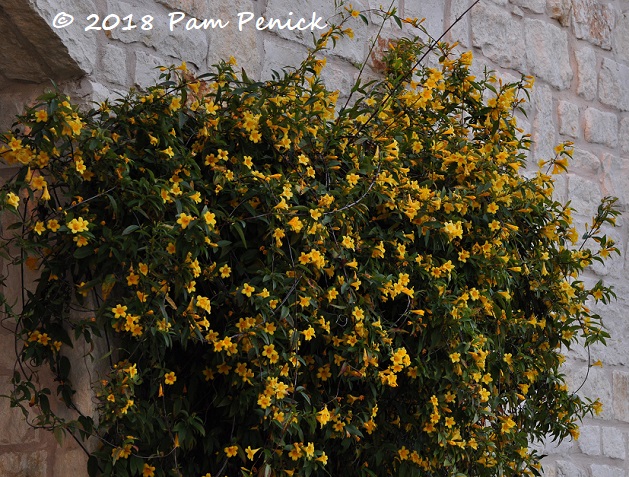
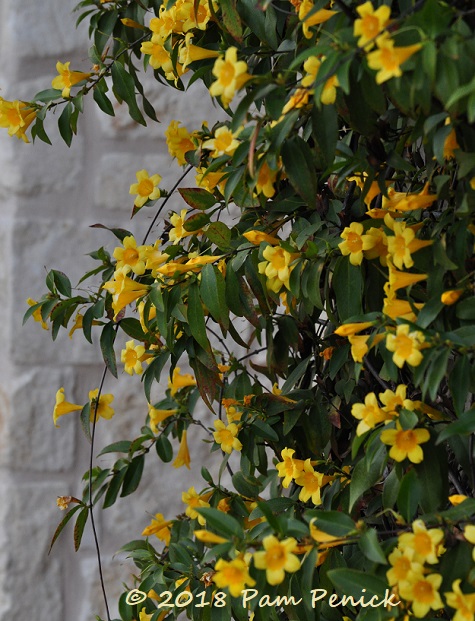
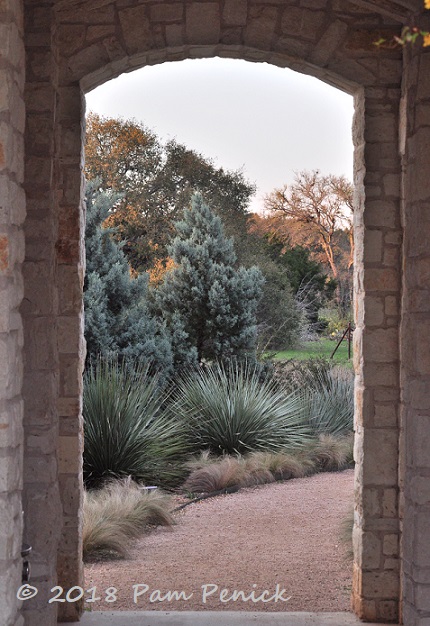
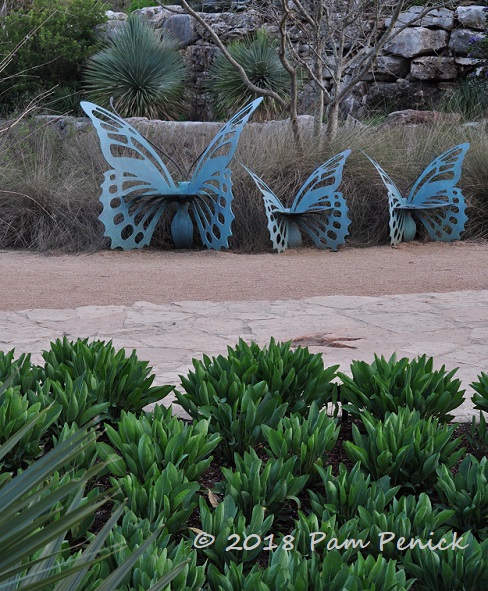
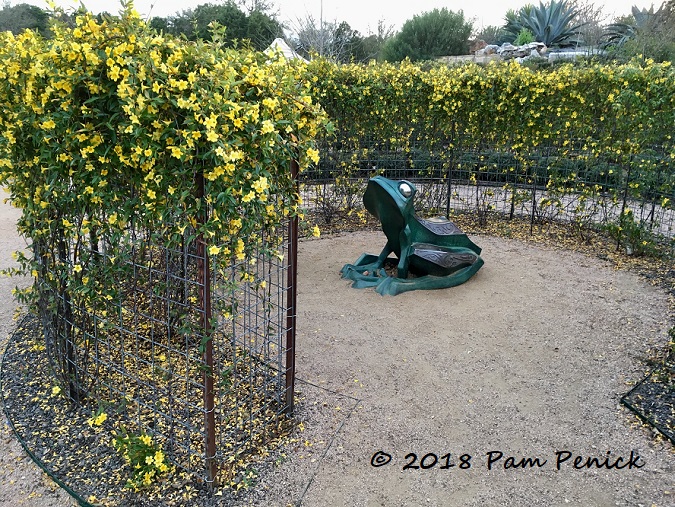
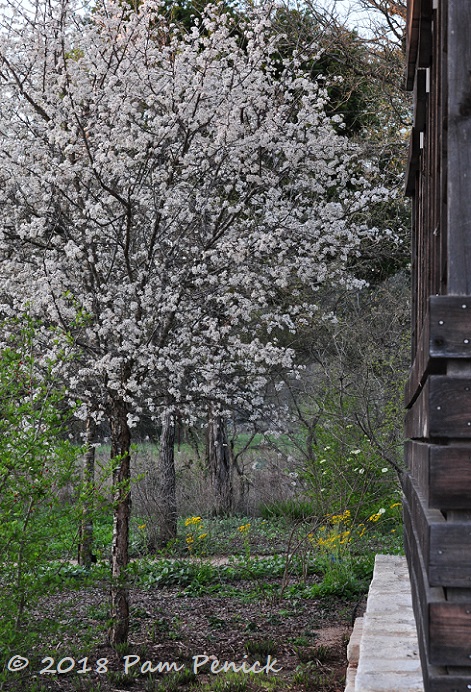
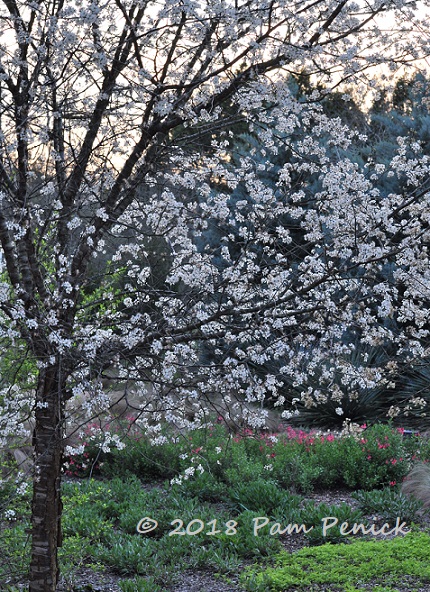
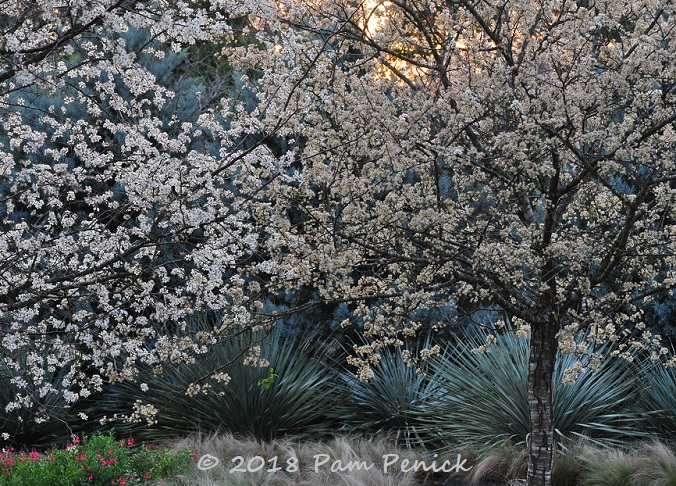
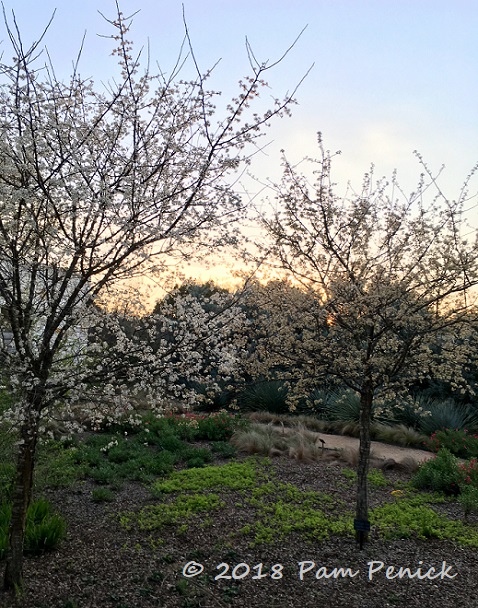
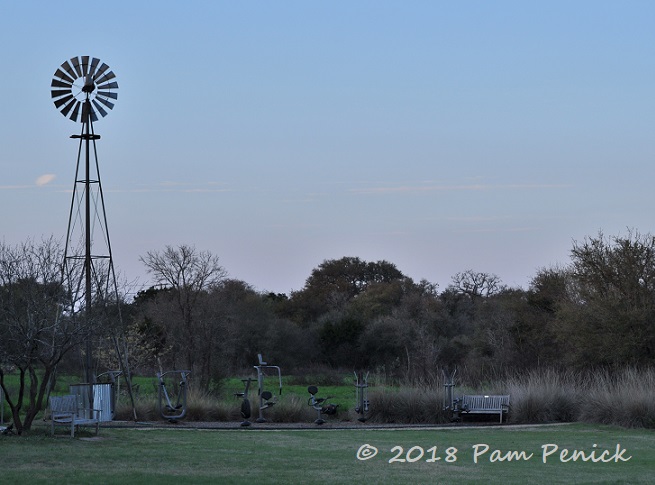
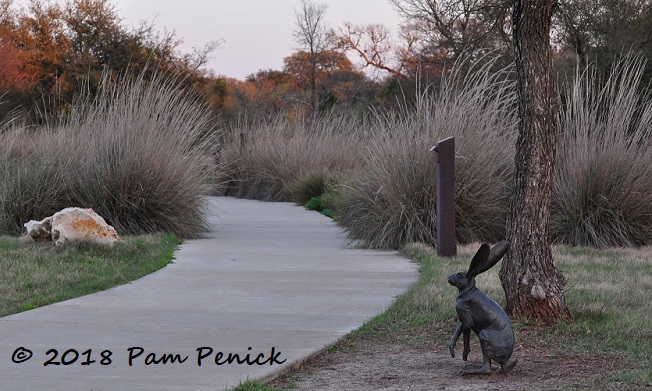
I’m not sure any other early spring flower can compete with bluebonnets! As March brought rain, lupine are finally making a tentative appearance along the roadways here but they can’t compete with your displays.
Bluebonnets are pretty fine indeed. CA may not have a big lupine show, but you’ve sure got the golden California poppies. —Pam
Love em bluebonnets. The flowering trees are sensational. It is true that about dusk the rabbits come out so it is best to go on home.
Hippity-hop! —Pam